What is Biomimicry in Textiles?
Nature has always been the greatest innovator, perfecting designs over millions of years. Today, scientists and designers are turning to nature for inspiration, leading to groundbreaking advancements in textiles. Biomimicry are textiles that have extracted their designs from nature and mimicked some of nature’s functionality. The science of biomimetics means copying, derivation or imitating from biology to develop a system with the least expenditure in which the features, mechanisms or raw materials of nature are used. The word biomimetic was first introduced by Schimitt, derived from the Greek words “bios” and “mimesis”, meaning life and imitation. Scientists in this field have created perfect products by considering three important elements in nature, including modelling, measures, and minds. In this way, fast developments in technology are obtained in an economic and environmental strategy while also addressing many obstacles.
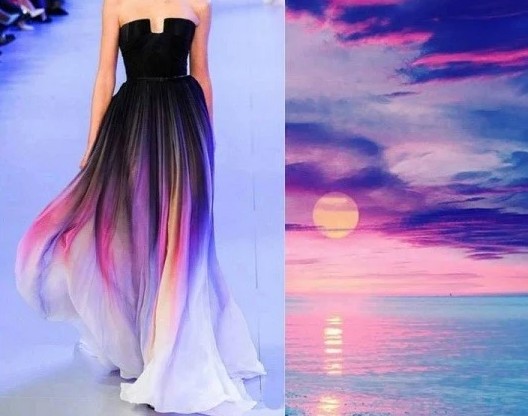
The key principle of biomimesis is quite simple: employ biology as inspiration and guide in the development of new materials. There are processes in natural systems that may be used as models for advancement of science and engineering. The importance of biomimicry in textiles as a discovery process is that natural processes are inherently sustainable and efficient in their utilization of resources; as it is becoming increasingly apparent, this is a critical issue.
Examples of Biomimicry in Textiles
Polypropylene – is soft like rubber or resistant like techno-polymers. It is used for soft furnishings, curtains, seat covers, carpets, knitwear, coats, jackets, industrial ropes, tarpaulins, webbing, netting, twine and grille fabrics. It makes up 93% of the geotextile industry.
Stomatex – is used to control microclimates. The stomata of leaves transpire and these are imitated on fabric; sweat condensation is removed from the surface of the skin by domed chambers which have a tiny hole at the top. These chambers act as tiny pumps with the exit pores; when the body is active the exit pores allows sweat to be wicked away from the surface of the skin. (Smart material responding to the environment). It is used in sportswear with neoprene and polyethylene because they are elastic and thermo-formable. It also has medical applications, including the creation of lightweight joint supports.
Spider Silk – ordinary silk is used due to its strength, elasticity and ability to absorb large quantities of mechanical energy. Spider silk was inspired by regular silk, but it added flexibility and rigidity to the list of properties. Thus, it is stronger than silk, rubber and steel which is brittle and can snap under strain.
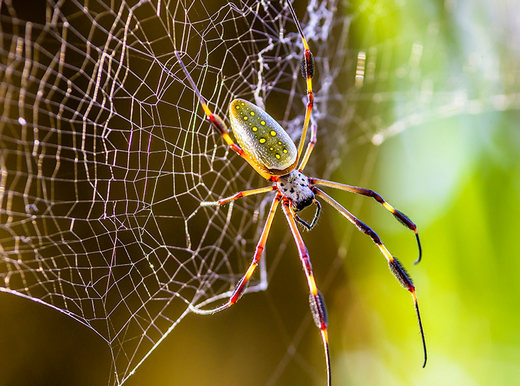
Velcro – the design was based upon the burrs on the seed of the goose grass plant. The hooked burrs attach to animal hair and get transported to other areas where they can dislodge, reach the ground and grow. These burrs are copied as hooks onto one side of the Velcro tape which attach to the fuzzy polyamide fibres of the opposite woven tape.
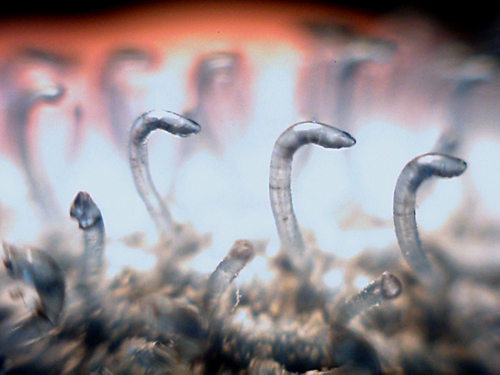
Fastskin – was inspired by the scales on a shark’s skin; tiny hydrofoils have V-shaped ridges that allow water to glide over them easily, which increases swimming speed. It was used first in the 2000 Olympic Games, when a large number of records were broken that year.
Pinecone – is a fabric that adapts to change in temperature by opening up when warm and closing when cold, as pinecone scales do. Developed by the MOD for uniforms in the desert, the material allowed people to keep cool during the day and warm during the night without excess clothing. The fabric has two layers bonded with tiny, interspersed flaps that open in the presence of increased humidity – when the wearer sweats, the flaps open, which increases air flow. Underneath the flaps, there is a waterproof layer that protects the wearer from rain.
Lotus Leaves, Butterfly Wings and Dragonfly Wings – are natural materials with hydrophobic surfaces. In the case of lotus leaves, there is a waxy surface; the butterfly and dragonfly wings have rough surfaces that repel water and become clean when it rains. One fabric, Nano-Tex, mimics these water-repellent and self-cleaning properties using polyethylene or polypropylene with wax sprayed onto the surface of the fabric.
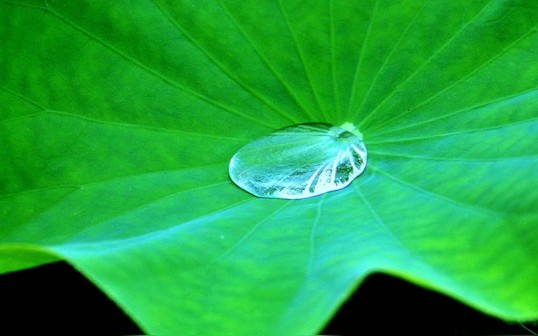
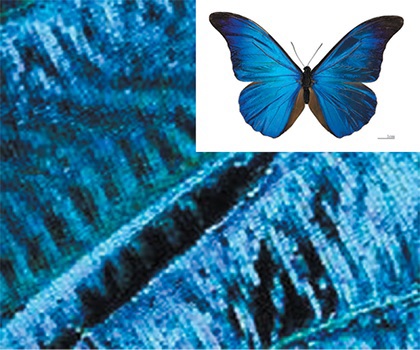
Colouration without Dyeing or Printing – the Morpho rhetenor butterfly’s wing colours come from pigmentation and the structure of wing scales known as structural colour. There are only yellow, orange-yellow, red, black and brown pigments in their wings; the green, blue and violet colours come from layers of non-particles that are separated by layers of air in a pattern similar to mosaic tiles. Each tile has a different structure and a tiny gap that allows light refraction. The thickness of the layers alters the colours that are seen. Nanotechnology enables the production of optical polyester or polyamide monofilaments called Morphotex, which mimics the colours of the Morpho butterfly without the use of pigments or dyes. The laminated fabric has sixty-one layers measuring 70nm thick with four basic colours: red, green, blue and violet, which are controlled precisely by the layering thickness according to the visible wavelength and, therefore, the colour will never fade.
Suede – is treated leather. Faux suede is produced from a calendered, polyester microfiber.
Other Areas in Development
The branching network in trees transports water in an efficient manner. This has been mimicked in multilayered, woven or knitted fabrics to provide superb water transportation properties, which offers better moisture management for enhanced comfort. Feathers have a central stem with side branches, each of which has additional branches. These can trap air and provide good insulation, especially the fluffy down feathers. An additional feature of feathers is their ability to compress in water, which offers superb aquatic dynamics that spring back into shape when dry, which happens quickly. These properties are being investigated to produce synthetic “down” insulators.
Why Biomimicry Matters in Textiles?
Biomimicry is transforming the textile industry by bringing sustainable and innovative solutions inspired by nature. Here’s why it matters:
- Sustainability: Nature uses minimal energy and waste. Mimicking this can reduce the environmental footprint of textile production.
- Functionality: Nature-inspired designs often outperform traditional ones, offering better comfort, protection, or durability.
- Innovation: Biomimicry opens new doors for designing textiles for healthcare, sportswear, military, and more.
Conclusion
Biomimicry is reshaping textiles by transforming the way we design, produce, and use fabrics. As technology advances, biomimicry will play an even bigger role in textile innovation. Imagine clothes that heal like skin, fabrics that generate energy like leaves, or materials that grow and decompose naturally. Biomimicry in textiles is a perfect example of how looking to nature can lead to smarter, greener innovations.
References
[1] Ashford, B. (2016). Fibres to fabrics.
[2] Mondal, M. I. H. (2022). Protective Textiles from Natural Resources. Woodhead Publishing.
[3] Sinclair, R. (2014). Textiles and fashion: Materials, Design and Technology. Woodhead Pub Limited.
[4] Kozlowski, R. M. (2012). Handbook of Natural fibres: Volume 2: Processing and Applications. Elsevier.
[5] Abbott, A., & Ellison, M. (2008). Biologically inspired textiles. Elsevier.
